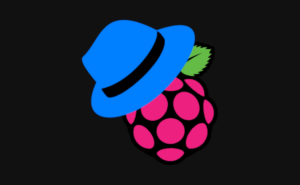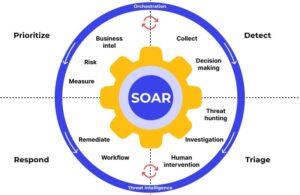SOAR Implementation Guide: Optimizing Security Operations
Introduction
In today’s rapidly evolving cybersecurity landscape, Security Operations Centers (SOCs) face an unprecedented volume of alerts and incidents. Security Orchestration, Automation, and Response (SOAR) technology emerges as a powerful solution to streamline these processes. This comprehensive guide explores when and how to implement SOAR effectively in your organization.
What is SOAR?
SOAR (Security Orchestration, Automation, and Response) is an advanced system designed to:
- Automate and accelerate cyber threat detection and response processes
- Unify disparate security tools and data into a cohesive framework
- Enable faster, more efficient threat response
- Reduce the workload on security specialists
- Minimize business risks associated with cyber threats
The Need for Automation in Cybersecurity
The Daily Struggle of SOC Teams
Security professionals face a relentless barrage of incidents daily. Logs fill up rapidly, and alerts fire off one after another. The challenge isn’t just to respond to all these manually but to do so with maximum speed and efficiency.
The Limitations of Manual Processing
As the volume of incidents grows, distinguishing false positives from genuine threats becomes increasingly complex. Manual processing of dozens or even hundreds of alerts daily transforms the SOC into an “alert processing factory,” raising a critical question: How much time is spent on routine tasks?
When to Consider Implementing SOAR
Signs That You Need SOAR
- Incident Volume Exceeds Team Capacity
- When your team struggles to address critical incidents, and minor threats go unnoticed, it’s time to consider automation.
- Response Time Lags
- If investigations take too long, and delays in processing could lead to data breaches or system compromises, SOAR becomes a necessity rather than an option.
- Team Burnout from Routine Tasks
- Security experts shouldn’t waste their potential on monotonous work. SOAR can alleviate this burden, freeing specialists for more critical tasks.
The Practical Benefits of SOAR
The most significant advantage of SOAR is the reduction in Mean Time to Respond (MTTR) to incidents. SOAR can:
- Automatically collect data
- Initiate investigations
- Apply basic rules for blocking suspicious activities
- Generate reports
This automation allows SOC specialists to focus on analyzing more complex threats much faster, as the routine work is handled by the system.
When SOAR May Not Be the Right Choice
Scenarios Where SOAR Might Be Overkill
- Small Companies with Limited Incident Flow
- If the number of threats and alerts is manageable, SOAR might unnecessarily complicate processes.
- Lack of Specialized Personnel
- Implementing and configuring SOAR requires an experienced team. Without it, the risks of improper setup may outweigh the benefits of automation.
Implementing SOAR: Best Practices
Preparation is Key
- Assess Your Current Security Posture
- Evaluate your existing security tools, processes, and team capabilities.
- Define Clear Objectives
- Identify specific goals for SOAR implementation, such as reducing MTTR or improving alert triage efficiency.
- Start Small and Scale
- Begin with automating simple, repetitive tasks and gradually expand to more complex processes.
- Invest in Training
- Ensure your team is well-versed in SOAR capabilities and operations.
- Regular Review and Optimization
- Continuously assess and refine your SOAR implementation to match evolving security needs.
The Future of SOAR in Cybersecurity
As cyber threats continue to evolve in complexity and volume, SOAR technology is expected to play an increasingly crucial role in security operations. Future developments may include:
- Enhanced AI and machine learning capabilities for more intelligent automation
- Improved integration with a wider range of security tools and platforms
- Advanced analytics for better threat prediction and proactive security measures
Conclusion
SOAR technology offers a powerful solution for organizations struggling with the increasing volume and complexity of cybersecurity threats. While not suitable for every situation, SOAR can significantly enhance the efficiency and effectiveness of security operations when implemented correctly.
By carefully assessing your organization’s needs, preparing adequately, and following best practices, you can leverage SOAR to transform your security operations, allowing your team to focus on high-value tasks and strategic security initiatives.
Remember, SOAR is not a magic solution to all security problems. It’s a tool to enhance your team’s capabilities, requiring proper configuration, ongoing management, and integration with your existing security framework to truly shine.














Post Comment